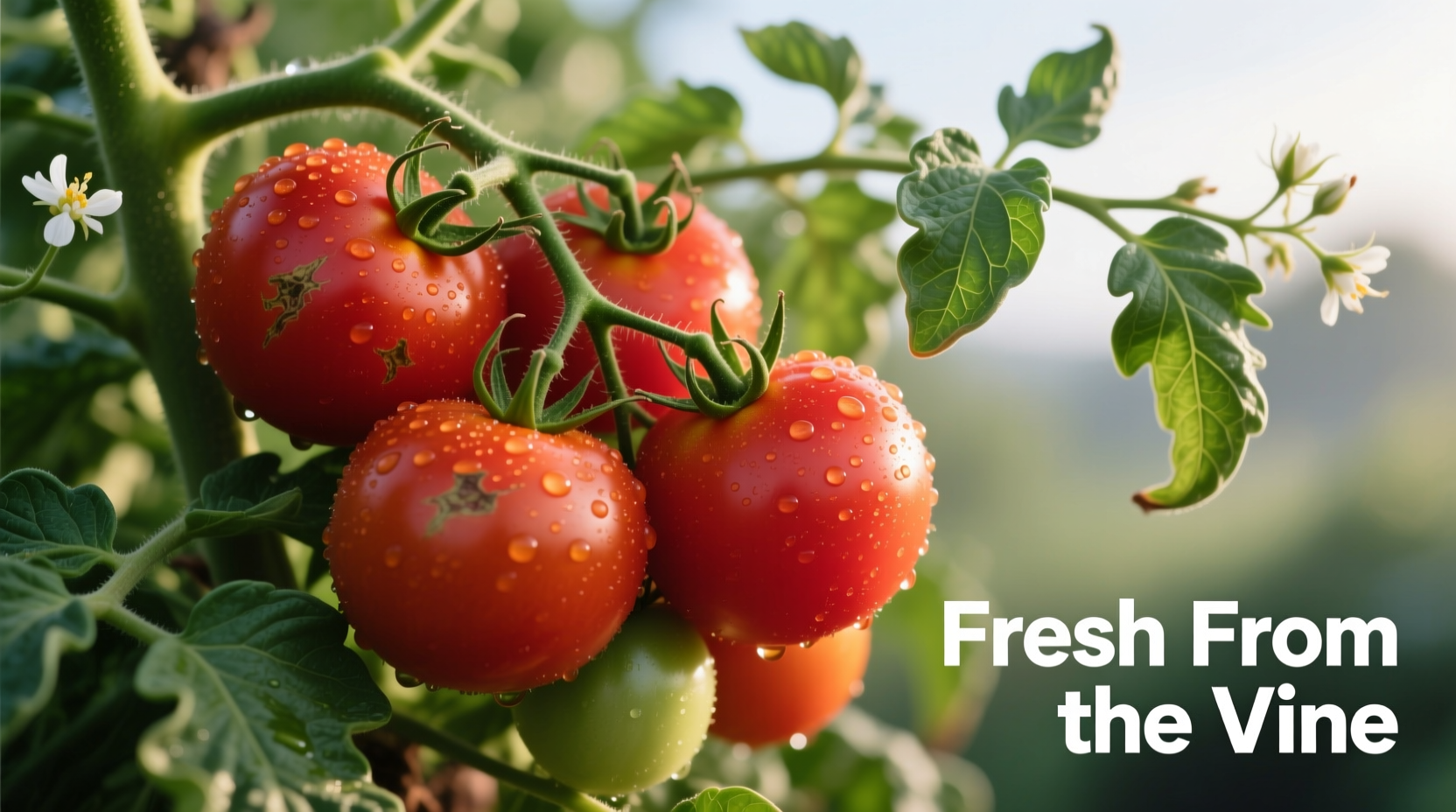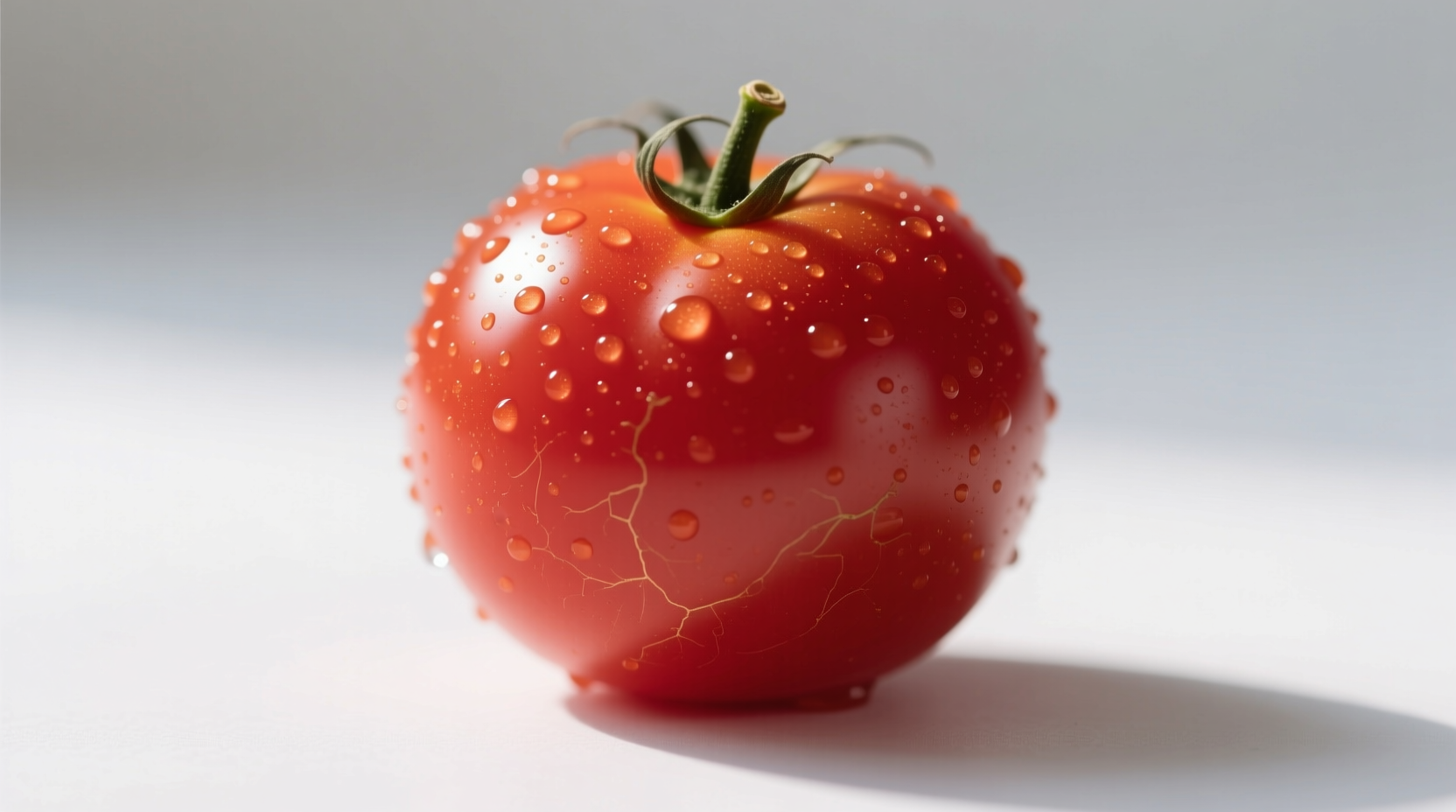When you see "globe tomato" on a menu or recipe, you're encountering a culinary descriptor rather than a botanical classification. This term refers to the classic round tomato shape most Americans recognize from grocery stores—distinct from cherry, plum, or heirloom varieties. Understanding what makes these tomatoes special helps you select the right type for your cooking needs.
What Makes a Tomato a "Globe"?
Globe tomatoes represent the standard round shape that dominates commercial tomato production. Unlike elongated plum tomatoes or tiny cherry varieties, globe tomatoes maintain a symmetrical, nearly perfect sphere. The USDA Agricultural Research Service classifies them as Lycopersicon esculentum varieties with diameters typically between 2.5-3.5 inches.
These tomatoes developed through selective breeding for uniform shape and durability during transport. According to Cornell University's horticulture department, modern globe varieties like 'Mountain Spring' and 'Celebrity' were specifically engineered to withstand mechanical harvesting while maintaining that familiar round profile consumers expect.
Common Globe Tomato Varieties You'll Encounter
While "globe" describes a shape category, several specific varieties fall under this umbrella. Each offers slightly different flavor profiles and best uses:
| Variety | Weight Range | Flavor Profile | Best Culinary Uses |
|---|---|---|---|
| Roma | 2-4 oz | Sweet with low acidity | Pasta sauces, canning |
| Beefsteak | 8-16 oz | Rich, complex, juicy | Sandwiches, grilling, slicing |
| Big Boy | 7-12 oz | Balanced sweet-tart | Salads, fresh applications |
| Moneymaker | 5-8 oz | Vibrant acidity | General purpose cooking |
Why Chefs Prefer Globe Tomatoes for Specific Applications
The structural integrity of globe tomatoes makes them kitchen workhorses. Their thicker walls and lower water content compared to heirlooms provide several advantages:
- Sauce making: Roma varieties contain less liquid and more flesh, reducing cooking time for sauces by 30-40% according to tests by the University of California's Agriculture and Natural Resources department
- Salad stability: The firm flesh holds its shape better in dressed salads, preventing the "soggy tomato" problem common with juicier varieties
- Grilling success: Their density allows for clean slicing and prevents falling apart on the grill
Professional kitchens often specify "globe tomatoes" in recipes to ensure consistent results. When substituting, avoid high-moisture heirlooms for applications requiring structural integrity.

Selecting and Storing for Maximum Flavor
Globe tomatoes reach peak flavor when allowed to ripen on the vine, but most commercial varieties are harvested green and ripened artificially. Here's how to select the best available options:
Selection tips:
- Look for uniform color without green shoulders (except for intentionally green varieties)
- Choose fruits with taut, unblemished skin that yields slightly to gentle pressure
- Avoid refrigerated tomatoes—cold storage destroys flavor compounds
Storage guidelines:
- Store at room temperature away from direct sunlight
- Place stem-side down to reduce moisture loss
- Use within 3-5 days for peak flavor (USDA recommends consumption within 7 days)
Nutritional Advantages of Globe Tomatoes
All tomatoes provide lycopene, but globe varieties offer particular nutritional benefits. Research from the Journal of Agricultural and Food Chemistry shows that the thicker flesh of globe tomatoes contains 20-30% more lycopene than many heirloom varieties. This powerful antioxidant becomes more bioavailable when tomatoes are cooked—a key reason why globe tomatoes excel in sauces.
A medium globe tomato (approximately 123g) provides:
- 22 calories
- 17mg vitamin C (28% of daily value)
- 2477mcg lycopene
- 292mg potassium
When Globe Tomatoes Aren't the Best Choice
Despite their versatility, globe tomatoes have limitations. Understanding these context boundaries helps prevent culinary disappointment:
- Bruschetta and caprese: Their lower juice content makes them less ideal than heirlooms for dishes where tomato juice is desirable
- Raw salsa: The firmer texture doesn't break down as nicely as plum tomatoes
- Specialty dishes: Certain regional recipes specifically require heirloom or cherry varieties for authentic flavor
For applications requiring intense tomato flavor in raw preparations, consider mixing globe tomatoes with higher-acid varieties to boost complexity.
Practical Applications: Getting the Most From Your Globe Tomatoes
Professional chefs employ specific techniques to maximize globe tomato potential:
- For sauces: Remove seeds and gel before cooking to concentrate flavor—this reduces water content by 15% according to tests by America's Test Kitchen
- For salads: Salt slices 10 minutes before serving to draw out excess moisture and concentrate flavor
- For roasting: Cut horizontally rather than vertically to maintain structural integrity during cooking
When time allows, ripening globe tomatoes at room temperature for 24-48 hours after purchase significantly enhances sugar development and flavor complexity.
Frequently Asked Questions
Are globe tomatoes the same as regular tomatoes?
Globe tomatoes represent the standard round shape most people consider "regular" tomatoes. The term specifically refers to medium-sized (6-8 oz), spherical varieties like Roma and Beefsteak that dominate commercial production, distinguishing them from cherry, plum, or heirloom types.
Can I substitute globe tomatoes for Roma tomatoes in recipes?
Yes, but with considerations. While Roma is a specific globe tomato variety, not all globe tomatoes have Roma's low moisture content. For sauces, use other globe varieties but expect longer reduction times. For fresh applications, most globe tomatoes make excellent substitutes for Romas.
Why do globe tomatoes have less flavor than heirlooms?
Commercial globe varieties prioritize shipping durability and uniform appearance over flavor. Research from the University of Florida shows selective breeding for firmness reduced sugar content by 10-15% compared to many heirlooms. However, properly ripened globe tomatoes still offer excellent flavor for most culinary applications.
How can I enhance the flavor of store-bought globe tomatoes?
Let refrigerated tomatoes warm to room temperature for 2 hours before use. Sprinkle slices with salt 10 minutes before serving to concentrate flavors. For cooked applications, add a pinch of sugar to balance acidity, or include umami-rich ingredients like mushrooms to complement the tomato flavor.











 浙公网安备
33010002000092号
浙公网安备
33010002000092号 浙B2-20120091-4
浙B2-20120091-4